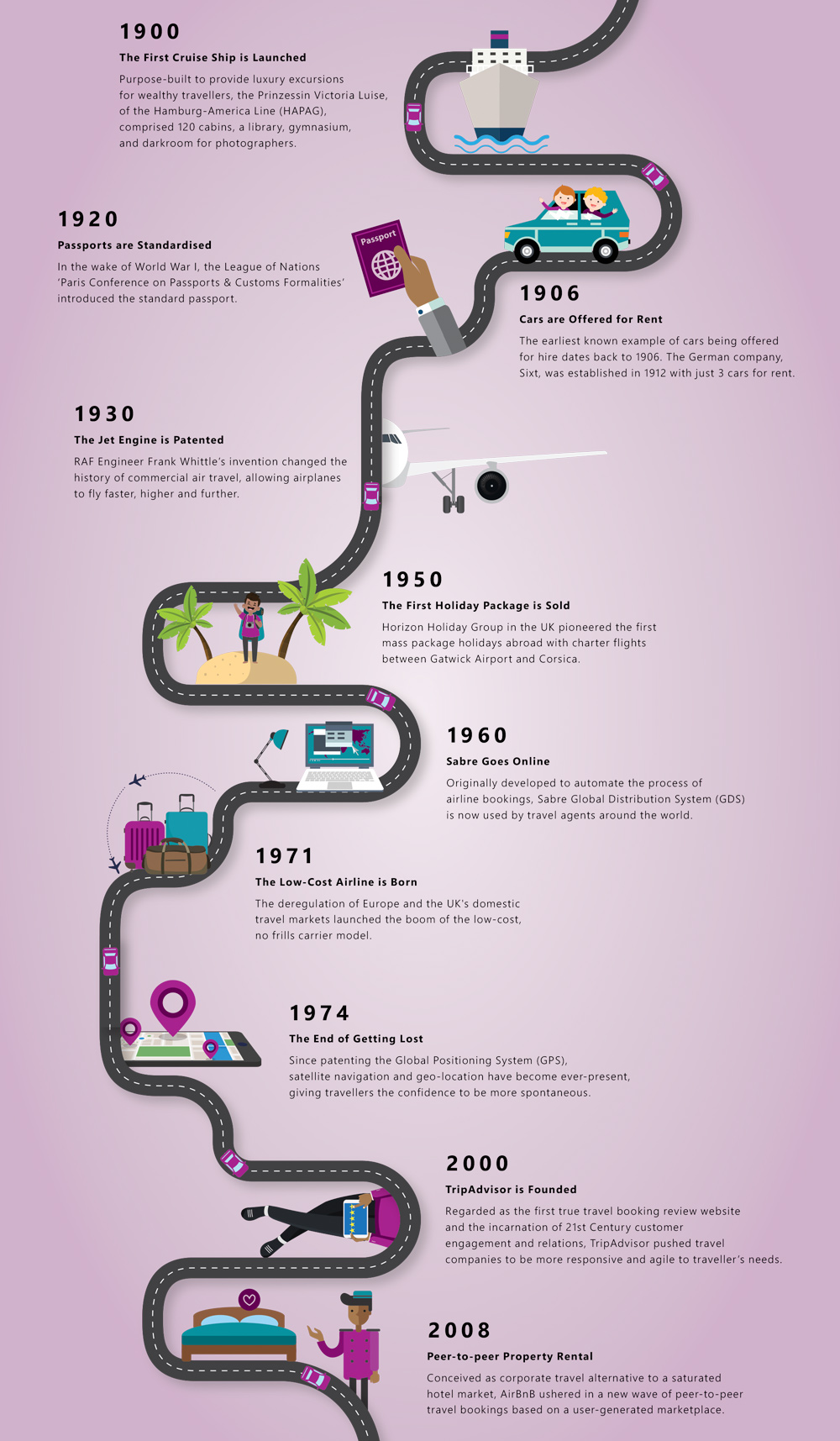The Evolution of 20th Century Travel
July 2018 - Advent of railway initially catalysed business travel and later leisure travel. Gradually special trains were chartered to only take leisure travellers to their destinations. Package tours were then organised by entrepreneurs such as Thomas Cook.
Highlights of travel in the 19th century
• Advent of railway initially catalysed business travel and later leisure travel. Gradually special trains were chartered to only take leisure travel to their destinations.
• Package tours organised by entrepreneurs such as Thomas Cook.
• The European countries indulged in a lot of business travel often to their colonies to buy raw material and sell finished goods.
• The invention of photography acted as a status-enhancing tool and promoted overseas travel.
• The formation of first hotel chains; pioneered by the railway companies who established great railway terminus hotels.
• Seaside resorts began to develop different images as for day-trippers, elite, for gambling.
• Other types of destinations-ski resorts, hill stations, mountaineering spots etc.
• The technological development in steamships promoted travel between North America and Europe.
• The Suez Canal opened direct sea routes to India and the Far East.
• The cult of the guidebook followed the development of photography.
Tourism in the 20th Century
• The First World War gave first-hand experience of countries and aroused a sense of curiosity about international travel among less well-off sector for the first time.
• The large scale of migration to the US meant a lot of travel across the Atlantic.
• Private motoring began to encourage domestic travel in Europe and the west.
• The sea side resort became annual family holiday destination in Britain and increased in popularity in other countries of the west. Hotels boomed in these destinations.
The birth of air travel and after
• The wars increased interest in international travel. This interest was given the shape of mass tourism by the aviation industry.
• The surplus of aircraft and growth of private airlines aided the expansion of air travel. The aircraft had become comfortable, faster and steadily cheaper for overseas travel. With the introduction of Boeing 707 jet in 1958, the age of air travel for the masses had arrived.
• The beginning of chartered flights boosted the package tour market and led to the establishment of organised mass tourism. The Boeing 747, a 400-seat craft, brought the cost of travel down sharply.
• The seaside resorts in the Mediterranean, North Africa and the Caribbean were the initial hot spots of mass tourism.
• A corresponding growth in hotel industry led to the establishment of world-wide chains. Tourism also began to diversify as people began to flock alternative destinations in the 70s.
• Nepal and India received a throng of tourists lured by Hare Krishna movement and transcendental meditation.
• The beginning of individual travel in a significant volume only occurred in the 80s. Air travel also led to a continuous growth in business travel especially with the emergence of the MNCs (multinational corporations).
Did you know?
Cyriacus of Ancona (1391-1452), was the first cultural tourist after he journeyed in search of the Mediterranean's Classical past. In doing so, he laid the groundwork for the 18th-century Grand Tour and today's cultural holidays.
Here are 10 significant developments that changed travel

First Car Rental is a proudly South African car hire company. Book your next hire car with us today!